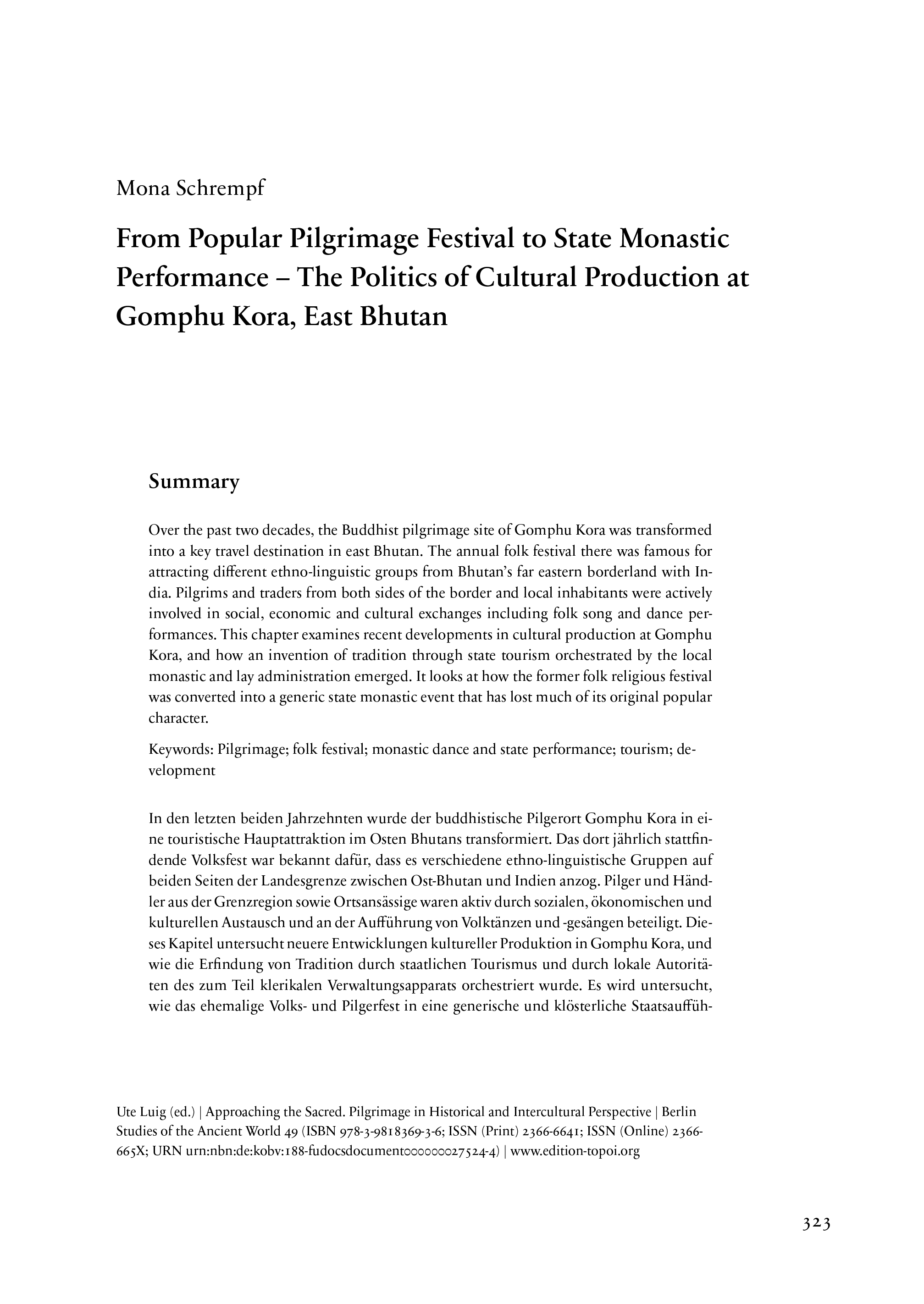From Popular Pilgrimage Festival to State Monastic Performance – The Politics of Cultural Production at Gomphu Kora, East Bhutan
Over the past two decades, the Buddhist pilgrimage site of Gomphu Kora was transformed into a key travel destination in east Bhutan. The annual folk festival there was famous for attracting different ethno-linguistic groups from Bhutan’s far eastern borderland with India. Pilgrims and traders from both sides of the border and local inhabitants were actively involved in social, economic and cultural exchanges including folk song and dance performances. This chapter examines recent developments in cultural production at Gomphu Kora, and how an invention of tradition through state tourism orchestrated by the local monastic and lay administration emerged. It looks at how the former folk religious festival was converted into a generic state monastic event that has lost much of its original popular character.
In den letzten beiden Jahrzehnten wurde der buddhistische Pilgerort Gomphu Kora in eine touristische Hauptattraktion im Osten Bhutans transformiert. Das dort jährlich stattfindende Volksfest war bekannt dafür, dass es verschiedene ethno-linguistische Gruppen auf beiden Seiten der Landesgrenze zwischen Ost-Bhutan und Indien anzog. Pilger und Händleraus der Grenzregion sowie Ortsansässige waren aktiv durch sozialen, ökonomischen und kulturellen Austausch und an der Aufführung von Volkstänzen und -gesängen beteiligt. Dieses Kapitel untersucht neuere Entwicklungen kultureller Produktion in Gomphu Kora, und wie die Erfindung von Tradition durch staatlichen Tourismus und durch lokale Autoritäten des zum Teil klerikalen Verwaltungsapparats orchestriert wurde. Es wird untersucht, wie das ehemalige Volks- und Pilgerfest in eine generische und klösterliche Staatsaufführung umgestaltet wurde, die viel von ihrem ursprünglichen, populären Charakter verloren hat.

